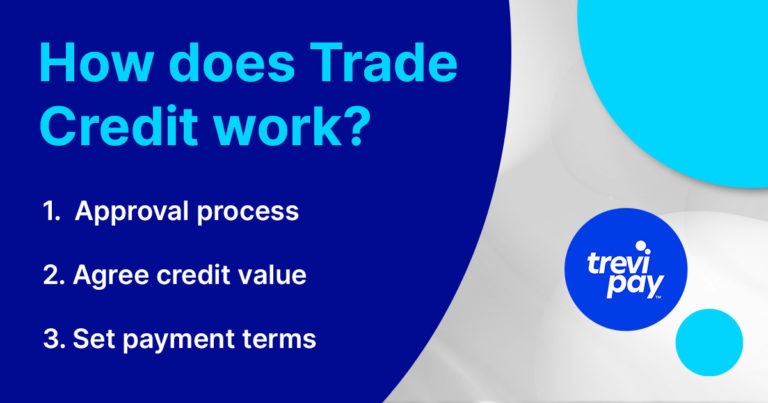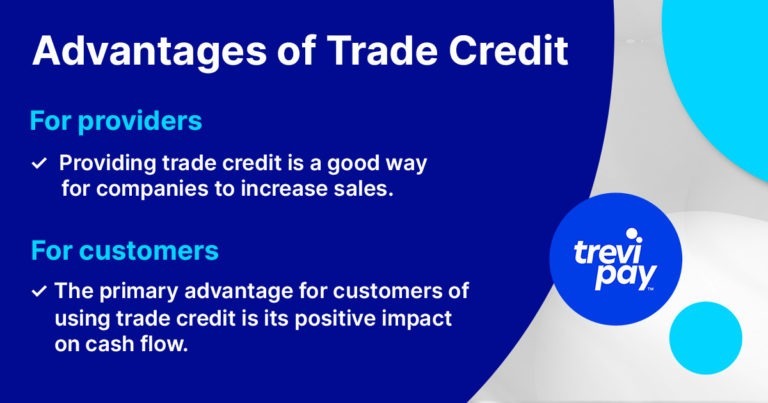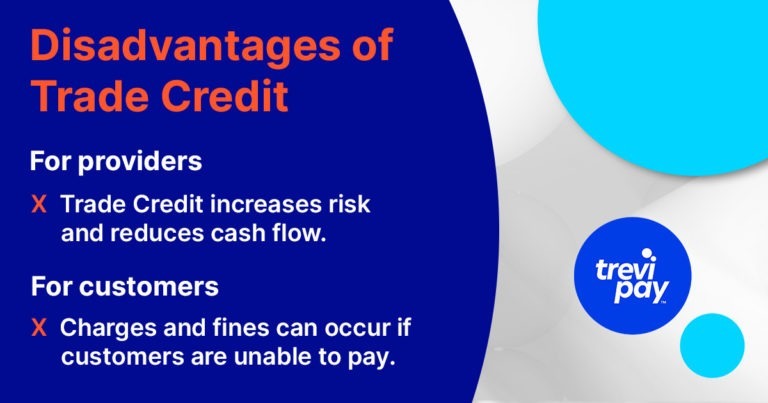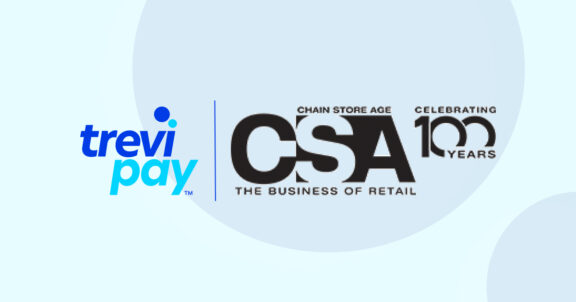Charles Dickens once described credit as when:
“A person who can’t pay, gets another person who can’t pay, to guarantee that he can pay.“
An amusing but not entirely accurate summary!
In fact, credit is an essential aspect of business. For example, 85% of B2B buyers want to purchase goods and services on terms.
Let’s explore what trade credit is, along with its benefits and drawbacks.
What is trade credit?
Trade credit is a type of B2B financing that enables businesses to receive goods from suppliers before paying for them.
The approval process and payment terms of the suppliers providing the credit will vary. They usually offer 30, 60 or 90 days (often known as net 30-, 60- or 90-day terms). This period can be even longer in some industries.
Unlike traditional bank loans, trade credit does not always directly involve a third party. However, specialist third party companies have sophisticated technology and expertise in this domain and many offer white-label services.
What’s the difference between trade finance and trade credit?
Both terms are often used interchangeably.
However, trade finance is an umbrella term covering multiple financing options (including factoring, letters of credit and trade credit itself).
B2B trade credit specifically refers to when goods and services are made available up front to a B2B buyer, and paid for at a later date.
Trade finance is commonly used in the context of macroeconomics and international trade. The World Trade Organization (WTO) estimates between 80% to 90% of world trade relies on a form of trade finance. While trade credit is part of trade finance, the term describes a relatively narrow set of circumstances.
For example, as a business, you would promote ‘trade credit’ to your customers. Economists would use the term ‘trade finance’ to describe this practice – and others like it – by companies more generally. While BNPL is a type of trade credit, understanding trade credit’s broader applications can help businesses make more informed decisions about offering credit to their customers.
How does trade credit work?

Trade credit availability and terms vary greatly between suppliers. However, in general, the process around trade credit involves the following steps.
1. Approval process
Trade credit begins with an approval process.
Previously, approving customers for trade credit was a labor-intensive manual process. It relied on employees’ accounting knowledge, experience and judgment. In recent years, much of it has been outsourced to technology.
Almost instantaneous decisions can now be made by advanced software. This takes into account credit history and projected turnover, amongst many other metrics.
2. Agreeing on credit value
Once a supplier has approved a borrower for trade credit, they need to establish the total value they are willing to make available.
This might vary according to factors discovered during the approval process or the supplier and borrower’s relationship. The latter, for example, may need to explain how it will use credit to grow.
3. Setting payment terms
This covers more than just the length of time allotted for repayment.
Trade credit resembles an interest-free loan. And like all loans, there are penalties and extra charges for late payment. This often includes fixed charges and interest on outstanding payments.
Trade credit providers also often offer discounts for early payment.
Trade credit example
Company A is a medium-sized construction machinery provider. It gives its trusted client, Company B (a small construction company) interest-free trade credit for goods or services up to the value of $10,000 over a period of 60 days.
An invoice is issued once Company B receives Company A‘s machinery. In the credit terms, the latter company offers the former a 1% discount on the total invoice value if it pays the invoice two weeks or sooner than its due date.
Company A has significantly reduced its exposure to risk by taking out trade credit insurance with a third-party provider. This means if there is a late payment or even a non-payment by Company B, the cash flow of Company A won’t be impacted.
Trade credit advantages and disadvantages

Trade credit is usually seen as a net positive for both parties involved, but for slightly different reasons. Let’s take a look at these, and the negatives.
Advantages of trade credit
For providers
Providing trade credit is a good way for companies to increase sales.
It offers customers who wouldn’t otherwise have been able to purchase goods access to immediate capital for payment.
Offering trade credit also signals a supplier’s financial health and overall reliability. It gives the company a competitive advantage over rivals and builds customer loyalty.
For customers
The primary advantage for customers of using trade credit is its positive impact on cash flow. This in turn also enables them to more easily scale up their goods and services, or simply take on work that doesn’t provide immediate payment.
Compared to other forms of business financing, trade credit is easy to access. Trade credit terms also typically improve over time as businesses build trust via consistent and punctual payments.
The disadvantages of trade credit

Like all forms of financing, trade credit comes with potential drawbacks, for both suppliers and buyers.
For providers
Though it may increase sales in the long term, trade credit increases risk and reduces cash flow for providers in the short term.
Having too many customers rely on trade credit might also make a supplier vulnerable to sudden and impactful negative economic events.
The risk inherent in lending can be mitigated with trade credit insurance (see below). But this can come at a cost.
After all, in the US, 55% of all B2B invoiced sales are overdue and even higher in the UK at 58% and parts of Asia are over 60%. Daunting figures – for both businesses and insurers.
For customers
Customers take on risk when they accept trade credit. If they are unable to pay within the agreed period, for example, they can incur charges and fines.
They also risk their relationship with their primary supplier. This in turn could disqualify them from working with alternative suppliers.
Is your credit management keeping pace with your trade credit terms?
SMEs often find more of their internal resources are swallowed up by managing their trade credit program as they scale up. In some cases, its drawbacks can outweigh its benefits.
One study found that over 70% of SMBs have been negatively impacted by extended payment terms or late payments in the last year.
Deciding whether to continue offering trade credit as you scale up depends on whether your credit management process, technology and resources can keep up. If it can’t, you could consider outsourcing it.
Trade credit insurance
Trade credit insurance (TCI) (also known as accounts receivables insurance) is insurance for companies that offer trade credit.
It can be taken out to cover transactions with all buyers or simply a specific group. The cost varies depending on your history, volume of trade credit, and other related risk factors.
Trade credit insurance helps mitigate risk against buyers going bankrupt, economic disturbances, and other potential delays or disruptions to suppliers’ working capital.
Rates usually range from between 0.15 – 0.3% of a supplier’s insurable turnover. However, this can vary according not only to an individual company’s credit record but wider economic circumstances, too.
Is digitization the future of trade credit?
B2B buyers expect a better payments experience. As with credit management and B2B financing options more generally, trade credit and trade credit insurance are becoming increasingly digitized. This not only streamlines the process but also reduces fraud and human error.
Onboarding and underwriting credit can be a difficult and time-consuming task that takes you away from your core business activities. Using a white label service provider such as TreviPay is likely to be the most effective and speediest route.
Our cloud-based solution automates the onboarding and underwriting process (for credit lines of up to $231,000 [/£190,000]). We also take on the risk and receivables collections. That means you always get paid on time and there are never any late invoices for you to chase.






